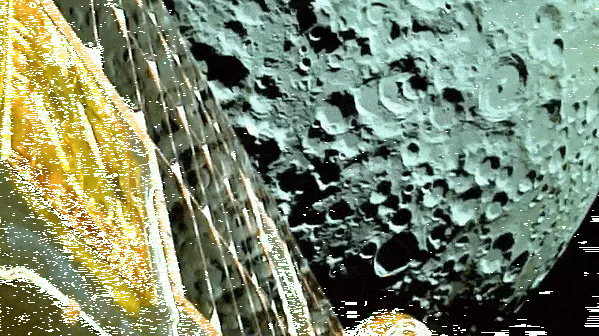
Ancient Lunar Magma Ocean Remnants Discovered? Artemis Mission Could Rewrite Lunar History
Did a colossal impact on the moon billions of years ago expose remnants of an ancient magma ocean? New research suggests the massive South Pole-Aitken (SPA) basin, one of the largest impact craters in the solar system, may hold clues to the moon's early formation. And NASA's upcoming Artemis mission could be the key to unlocking this lunar mystery by bringing back samples of this primordial material to Earth.
Roughly 4.3 billion years ago, a large object collided with the moon, creating the South Pole-Aitken (SPA) basin. According to a study, the SPA impactor excavated a thin, late-stage magma ocean. Now, Jeff Andrews-Hanna, a planetary scientist at the University of Arizona, suggest that Artemis could sample SPA ejecta and possible magma ocean material. This would provide invaluable insights into the final stages of lunar formation.

The SPA basin's slightly elongated shape indicates an oblique impact. Andrews-Hanna and his team studied this shape and compared it with other teardrop-shaped craters on the moon, concluding that the object was moving southward, not northward. This new perspective offers a fresh understanding of the impact event.
Adding to the intrigue, recent studies pinpoint India's Chandrayaan-3 landing site, near the moon's south pole, as a promising location to access primitive mantle samples. Researchers from the Indian Space Research Organisation (ISRO) analyzed data from the Pragyan rover's Alpha Particle X-Ray Spectrometer (APXS), revealing an unusual depletion of sodium and potassium paired with elevated levels of sulfur in the soil. This confirms the potential presence of primitive lunar mantle materials at the landing site.
These materials were likely ejected from the lunar mantle during the SPA basin's formation and later redistributed by successive collisions, according to research published in Nature Communications Earth and Environment. The low concentrations of sodium and potassium suggest that KREEP (potassium, rare earth elements, and phosphorus) were likely absent during the SPA basin’s formation in that location.
The significance of Artemis lies in the possibility of comparing samples taken from the SPA basin with those from the Procellarum KREEP Terrane (PKT), an area previously sampled during the Apollo missions and China’s Chang'e 5 and Chang'e 6 missions. This will enable scientists to piece together a more complete picture of the lunar mantle's evolution across different periods.
The samples obtained by the Artemis mission can be compared with the PKT region moon rocks to provide snapshots of the lunar mantle during two different eras, which, in turn, can help determine when the lunar magma ocean formed.

According to Andrews-Hanna, determining a precise age for the SPA basin will provide a precise age for this late-stage magma ocean crystallization captured by the impact. He argues that the magma ocean is inextricably tied to the birth of Earth.
Will Artemis rewrite our understanding of the moon's history? Could these lunar samples reveal secrets about the early Solar System? Share your thoughts and predictions in the comments below!